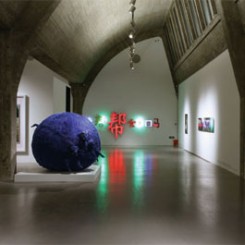What was most intriguing, though, was the inclusion of works that were not only notproduced by a self-professed performance artist, but that visually and intrinsically have little relation to performance per se. Foremost here are works by Yang Maoyuan and Duan Jianyu, but includes Liu Wei’s “Landscape No. 4, 6” (2004), Zhou Tiehai’s “Magazine Covers” (1995-97), and Zhan Wang’s piece as well as pieces already discussed. Of course, the interpretation of performance under such a wide-ranging context, or as a “consciousness of performance” (or “performative expression within contemporary art,” as the curator Leng Lin prefers to describe it) is an interesting idea, innovative even. How about the surprising inclusion of the painter Liu Xiaodong, who has always asserted a distance from even conceptual practice? If he accepts the labelling of his painting from life as performance, then do we need to reappraise the same preference in historical figures like van Gogh, Monet or Turner—the latter surely a candidate for a performance artist if ever there was one? Or is that too literal an interpretation? Several works led off in a more appreciable direction: for example Xu Zhen’s brilliant video “8848-1.86,” a parody of summiting the great mountain peak intended to be seen as a film. There were Qiu Zhijie’s light writing—“writing” done in the air in the dark with a torch before an open camera shutter—which only has visual form as a photograph. Hu Xiangqian’s “Sun,” which shows the artist acquiring a tan, which can also only be experienced via a video produced over time. These represent the various ways that “performative expression” has provided a liberating avenue of exploration for many of China’s most creative minds.
“Great Performances” at Pace Beijing
Despite the extraordinary range of works presented, Great Performances feels like an opportunity missed.
